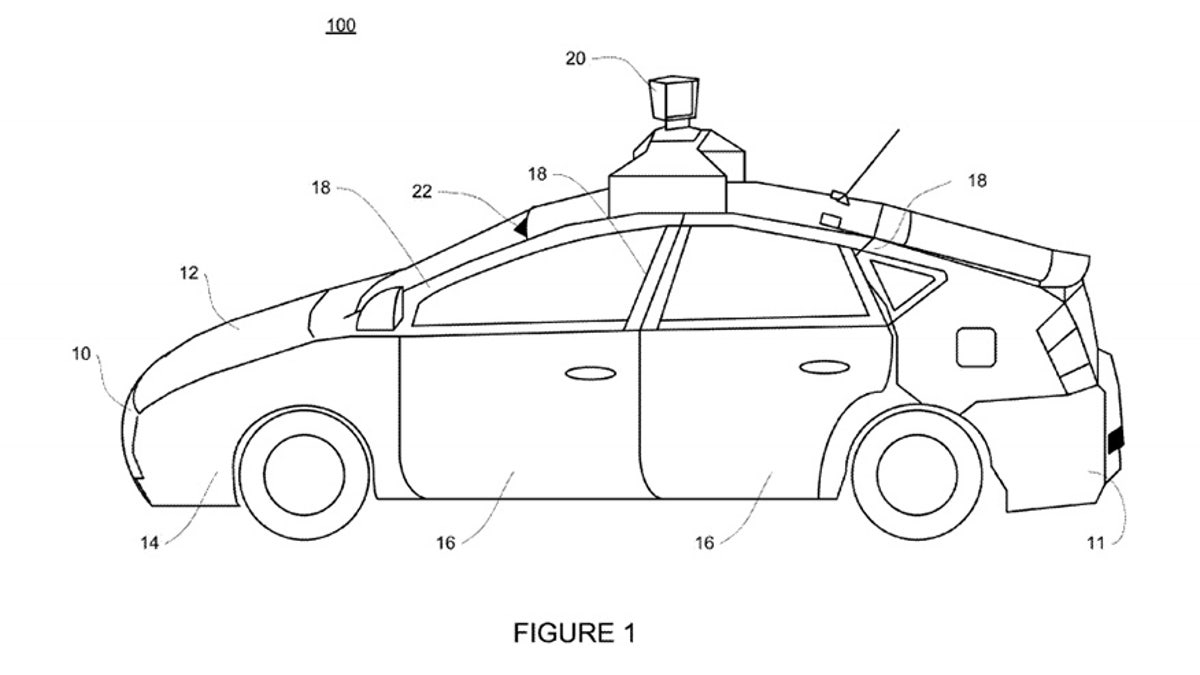
(Waymo)
While self-driving technology should one day help to eliminate most kinds of collisions, there will still be instances where the sudden coming together of car and object will be unavoidable.
For example, when someone rushes into the road from a spot unseen by the vehicle's sensors, the autonomous car may have too little distance in which to stop to avoid a collision. In such a case, the technology needs to decide if it's safe to swerve out of the way or simply apply the brakes and brace for impact.

Google spinoff Waymo has been thinking a lot about how best to deal with such situations. As it continues to improve its sensor technology to help its vehicle understand its surroundings and respond quickly and safely to unfolding events, it's also been considering how to deal with unavoidable collisions, whether it's with a "soft" human that could easily sustain an injury, or a harder object like another vehicle.
A patent recently awarded to Waymo offers some insight into how the company is approaching the issue. Its intriguing idea focuses on a car body that has the ability to transform into a soft shell when it detects it's about to collide with a human.
- Stickers on street signs can confuse self-driving cars, researchers show
- Waymo heads to death valley to test if its cars can take the heat
- Waymo is teaching its autonomous cars how to better react to emergency lights
- Waymo hits the road with its own self-driving truck project
- Waymo self-driving cars deal with bird poop in the coolest way
The vehicle would achieve this change by altering the rigidity of the panels, or "tension members" as Waymo describes them, that make up its exterior.
In Waymo's own words: "The vehicle may contain tension members that are arranged so that a change in tension across one or more of the tension members will alter the rigidity of the vehicle's surface. The vehicle may identify and respond to a potential collision by altering the tension that is applied to one or more tension members, thereby altering the rigidity of the vehicle's surface."
It's a fascinating idea, and outlines technology that would be just as useful on today's human-driven cars. But it's worth noting that at this stage it's just that an idea. In other words, there's no telling whether Waymo will ever build and implement the proposed technology. Still, the patent nevertheless offers some interesting insight into how the company is dealing with the challenge of designing effective pedestrian-impact technology.
In 2016, Waymo, or Google as it was then, proposed a slightly wackier-sounding idea that dealt with the same issue. It suggested adding an adhesive layer to the surface of its car that would become instantly sticky the moment it came into contact with a pedestrian. In such a scenario, the pedestrian would stay stuck to the car until it came to a safe stop, rather than bouncing off into the path of an oncoming vehicle or onto a hard road. But if the car somehow lost control or was unable to stop for some distance, it could be a terrifying ride for the "passenger" stuck on the outside. With that in mind, we much prefer Waymo's latest idea.